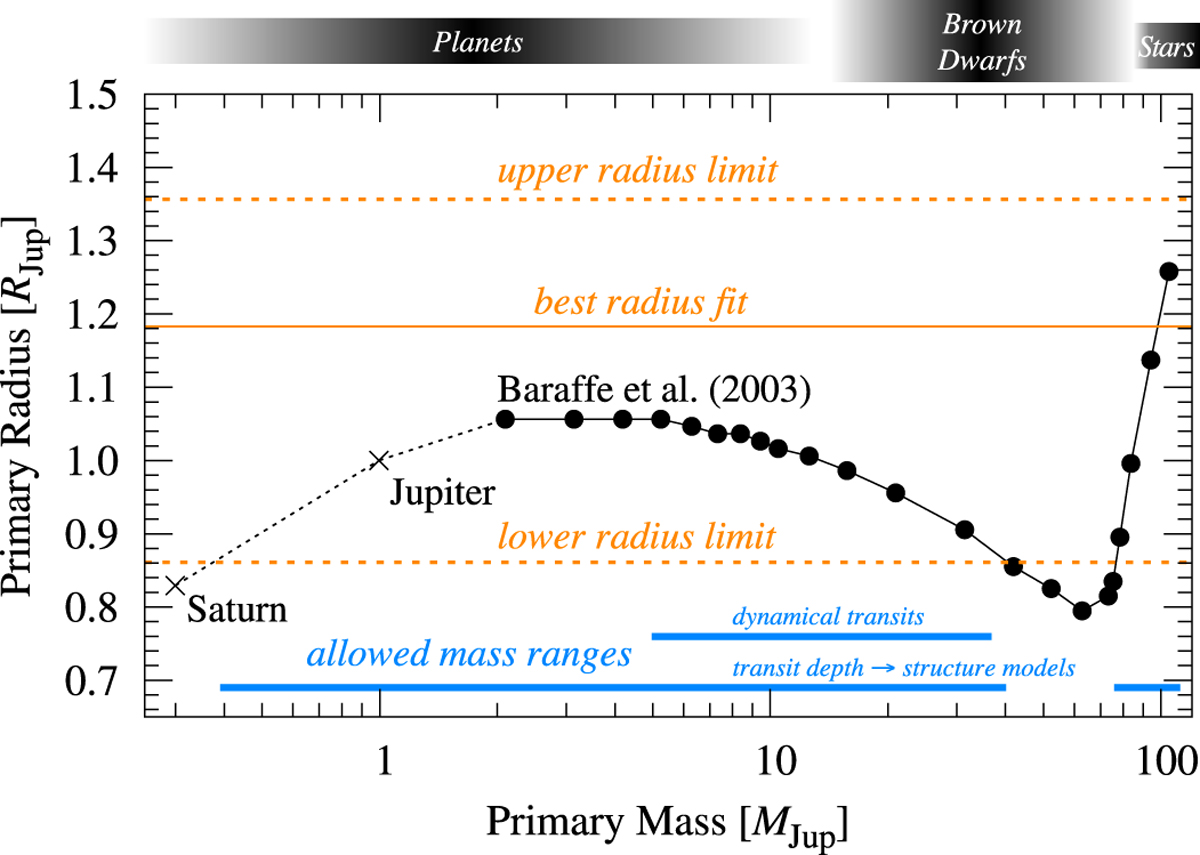Fig. 1

Mass–radius isochrone for substellar objects and VLMSs at an age of 5 Gyr (Baraffe et al. 2003, black dots). Jupiter’s and Saturn’s positions are indicated with crosses. Horizontal lines indicate the range of possible radii for Kepler-1625 b estimated from the Teachey et al. (2018) transit lightcurves and from the uncertainties in the stellar radius. Theblue bars at the bottom refer to the mass estimates that are compatible with the isochrone (lower intervals) and as derived from the dynamical signatures in the transits (upper interval).
Current usage metrics show cumulative count of Article Views (full-text article views including HTML views, PDF and ePub downloads, according to the available data) and Abstracts Views on Vision4Press platform.
Data correspond to usage on the plateform after 2015. The current usage metrics is available 48-96 hours after online publication and is updated daily on week days.
Initial download of the metrics may take a while.


